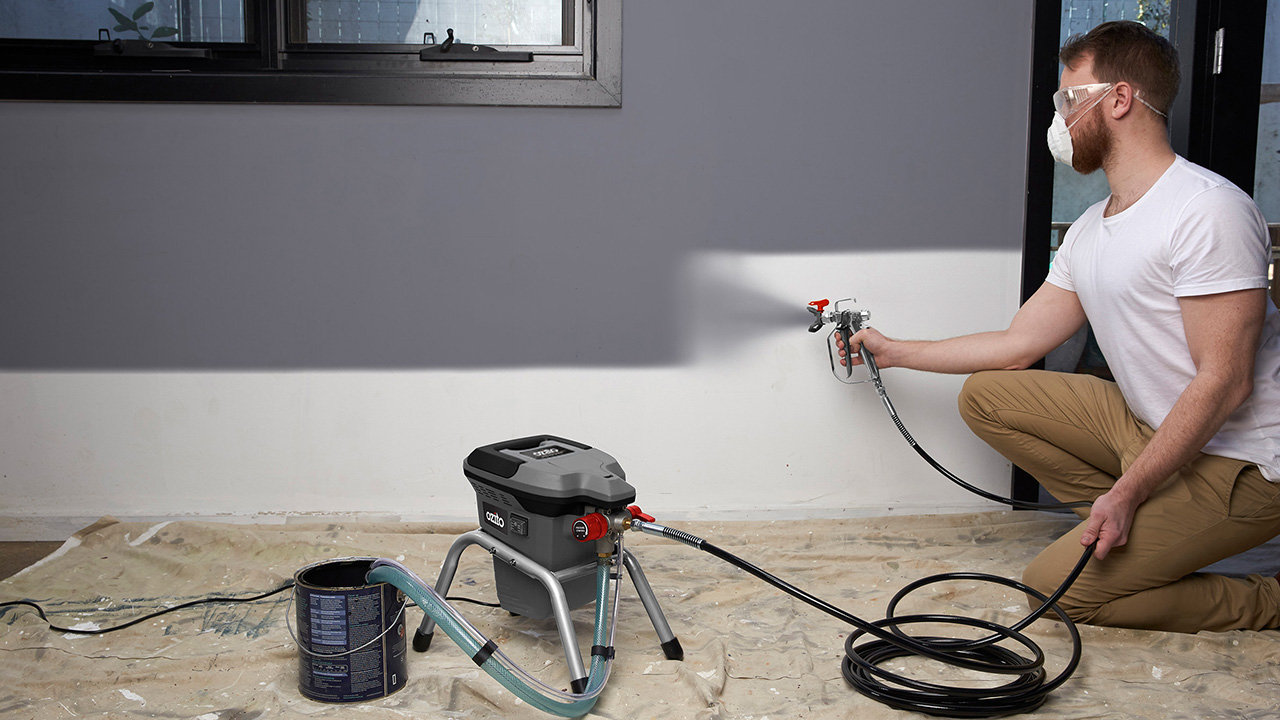HOW TO CLEAN YOUR AIRLESS PAINT SPRAYER THE RIGHT WAY!
So, you’ve just purchased an airless paint sprayer, and you’re wondering how to clean it.
It’s critical to clean your airless sprayer thoroughly and after each spray operation! Proper care and maintenance will ensure that your paint sprayer lasts and performs as expected. Airless paint sprayers are more efficient, but they require more cleaning and maintenance.
Because you are working with so many distinct pieces, the first time you do this may be perplexing. However, once you’ve done it a few times, it should seem like second nature. It’s also important to keep in mind that while you are painting, you may need to stop and completely clean out the system using water or thinners sometimes due to a paint blockage. Once you have done this, you can then get back to painting. This is the best way to take care of your airless paint sprayer to ensure it keeps working as safely and efficiently as possible.

ATTENDING TO THE DIFFERENT PARTS
The major components of each model may change somewhat, although they are all usually the same. When cleaning a paint sprayer, it’s best to disassemble it first to ensure that you get into all of the nooks where your material and dirt may be hiding.
The gadget as a whole, the nozzle, and the gun are the three primary pieces to clean. You can keep the tool assembled to remove the majority of the materials at first, but you’ll need to dismantle the gun and nozzles later for closer inspection.
WATER OR THINNER
Do you require the services of a professional airless paint sprayer cleaner? This is a simple question to answer. If you’ve been spraying water-based materials like latex, use tap water to clean them, and paint thinner to remove oil-based paints like lacquer.
Never mix up the two types of paint removers since using the wrong one might cause damage to the equipment. Also, highly corrosive solutions should not be used since they may cause harm.
When cleaning an airless paint sprayer, follow the cleaning instructions in the exact order. Remove any excess first, then clean the filters, nozzle, and gun with care.

1. SET UP YOUR BUCKETS
You’ll need to change your paint sprayer cleaning process depending on whether you’re spraying oil-based paints like lacquer or water-based paints.
One bucket should be filled with water or thinner, and the other should be empty to dump the filthy liquid cleaner into. You may need several buckets of water or thinner to completely clean out the paint sprayer. Keep running clean water or thinner through the system until the outgoing water is clean.
2. CLEAN OUT THE REMAINING PAINT
Place the suction in your clean bucket and point the pistol at the empty one. To remove any leftover material, use both the prime and spray modes.
You will also need to clean out the high pressure hose to ensure there is no paint remaining in it. To completely drain the hose, place one end over the waste bucket. Keep the other end ofthe hose higher up and begin coiling the hose. This will allow any remaining solvent in the hose to drain out.
3. CLEANING THE VARIOUS FILTERS
This is a crucial step in the instruction on how to clean a paint sprayer. After it has been cleared, you may begin cleaning the airless sprayer’s tiny components. Let’s begin with the filters.
Because of how airless paint sprayers function, most semi-professional to professional sprayers include two or three filters:
- Suction filter – a filter that is attached to the end of the suction hose that is submerged in the substance.
- Manifold filter – usually located on the left or right side of the machine.
- Pencil gun filter – guns can be located in the grip of an airless spray gun.
You should be able to examine the various components of your spray gun in your user handbook.
Remove the pencil filter from the gun, the manifold filter from the machine, and the suction filter from the suction hose’s end, then soak them in the solvent or water in the empty bucket. Because the solvent might be abrasive, do not immerse the entire gun in it; just the filters should be soaked.
Put on some gloves and begin cleaning away any remaining debris. Use an old stiff brush to gently scrape away at the hard areas.
4. CLEAN THE NOZZLES
When cleaning a paint sprayer, this is the most time-consuming portion, but there are a few things that can help. An old toothbrush, little pipe cleaners, and, if necessary, a very fine needle are the best tools for the job.
After soaking the spray tip in water or thinners for a few minutes, scrape both sides of the tungsten carbide spray nozzle with the toothbrush. Before calling it a day and putting it away, make sure you check everything thoroughly.
When you hold the nozzle up to the light, you should be able to see a pin-prick of daylight through it.
5. SCRUB THE SPRAY GUN
Now it’s time to look at the smaller components of the sprayer gun. Because you’re dealing with a variety of sizes of parts, you’ll need a variety of cleaning brushes to get into all of the tight spots.
Because some of the components are more delicate than others, having a couple softer brushes on hand is also a smart idea. Plastic and rubber seals, for example, are easily shattered, so you’ll want to use a softer, gentler brush.
You’ll need to remove the spray guard and clean it individually, as well as flush it under a running faucet.
Hold the gun upside down in a fast-flowing stream of water with the spray tip, spray guard, hose, and gun filter removed. The water should flow into the filter’s original location and out of the spray area.
6. WIPE DRY
Once all of the pieces are clean, wipe away the solvent or water until they are fully dry. This should be done with a clean, dry towel.
That wraps up our guide on how to clean an airless paint sprayer. We hope it has answered any questions you may have, and if you’re interested in exploring our airless paint sprayer range click here.

